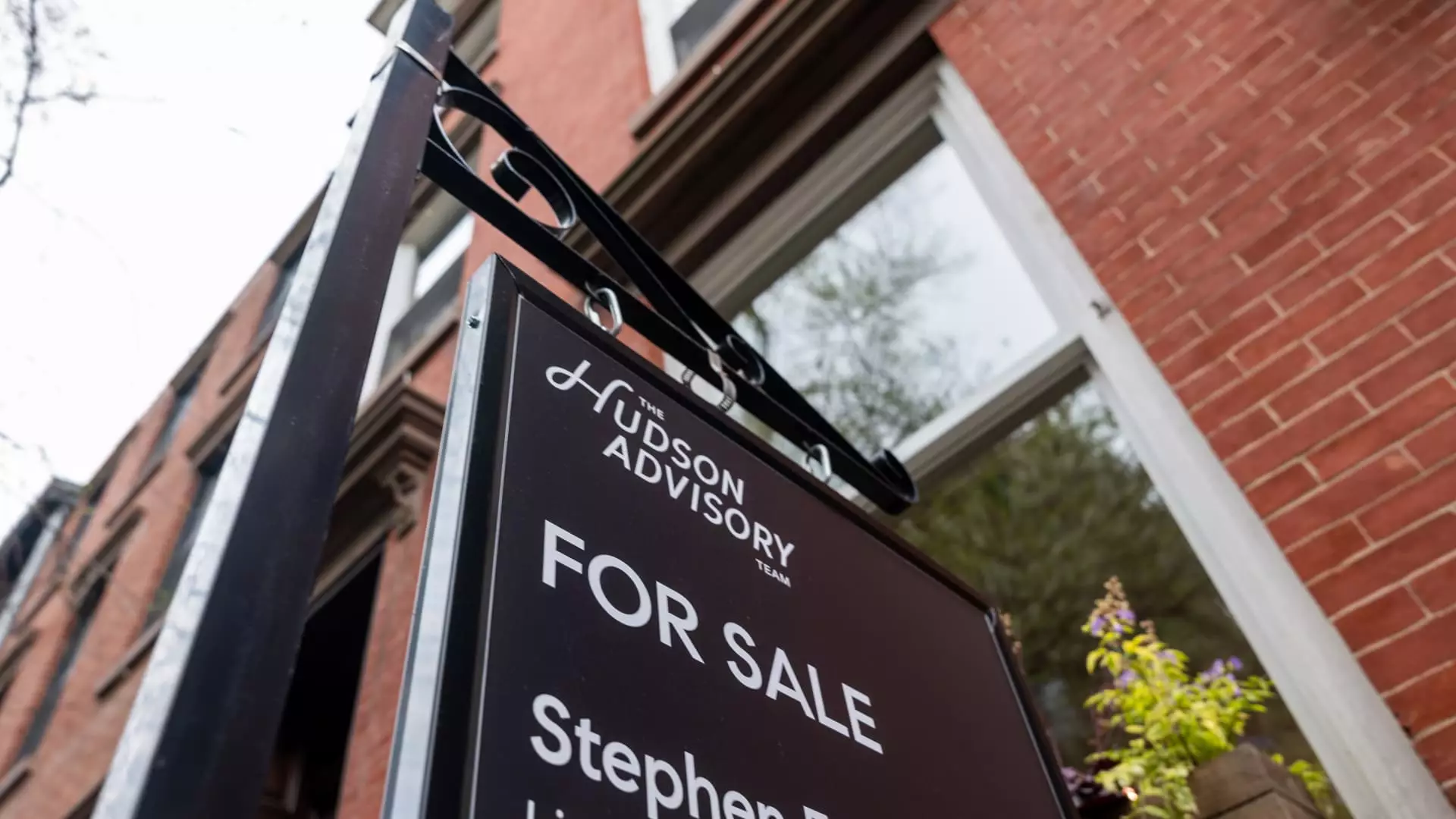In a troubling turn of events, the average rate on the popular 30-year fixed mortgage has catapulted to 7.1%, marking the highest point since February. The data, sourced from Mortgage News Daily, captures a volatile landscape where economic conditions are shifting rapidly, leaving potential homebuyers bewildered and anxious. What’s worse, this drastic uptick comes on the heels of fluctuating bond yields directly influenced by the tumultuous political climate and governmental policies.
The ripple effect of President Donald Trump’s tariffs has become a focal point in this scenario. When tariffs were first announced on numerous countries, bond yields spiked, sending mortgage rates higher. However, Trump’s subsequent decision to retract some of these tariffs led to a reduction in yields—yet not enough to provide relief to prospective homebuyers staring down the barrel of skyrocketing interest rates. What we’re witnessing is not merely historical nostalgia but rather a malady affecting the housing market.
Consumer Anxiety in the Face of Economic Turbulence
The latest reports reveal alarming data on consumer sentiment, presenting a concrete picture of economic distress. Anticipated inflation has soared to 6.7%—a staggering leap from March’s 5%—indicating that we are navigating uncharted waters in an economy that many had hoped was stabilizing. With housing being the most significant investment for households, the stakes are extraordinarily high. The rapid ascent of mortgage rates amplifies an already established fear: Can consumers trust this market, or is it time to abandon ship?
As Nancy Lazar from Piper Sandler indicated during her interview on CNBC, the implications of these rising mortgage rates are dire. With consumers concerned about job stability and overall economic health, the housing market’s immediate future appears rather bleak. Uncertainty breeds reluctance, and a potential slowdown in consumer engagement could further exacerbate the problems this market faces.
A Future Clouded by Uncertainty and Stagnation
Matthew Graham, the Chief Operating Officer at Mortgage News Daily, astutely points out the distinctive aspects of the current bond market, suggesting this could either signify the end of a dismal trend or yet another chapter in a long story of volatility that has defined the past year and a half. Regardless of how one assesses the market-facing turmoil, the fact remains that this week’s surge feels distinctly like an inflection point. The days ahead seem poised for more confusion and hesitancy from potential buyers who might otherwise be entering the market.
What does this mean for the average American hoping to purchase a home? Quite simply, it introduces a level of dread that few are willing to ignore. A 7.1% mortgage interest rate is not merely a number; it’s a deterrent that could stall the dreams of countless families looking to establish their homes. As the spring housing market unfolds, the critical question remains: can the American dream withstand the pressures of economic unease, or are we looking at a reality where homeownership slips further out of reach for the average consumer amidst rising rates and persistent inflation?

